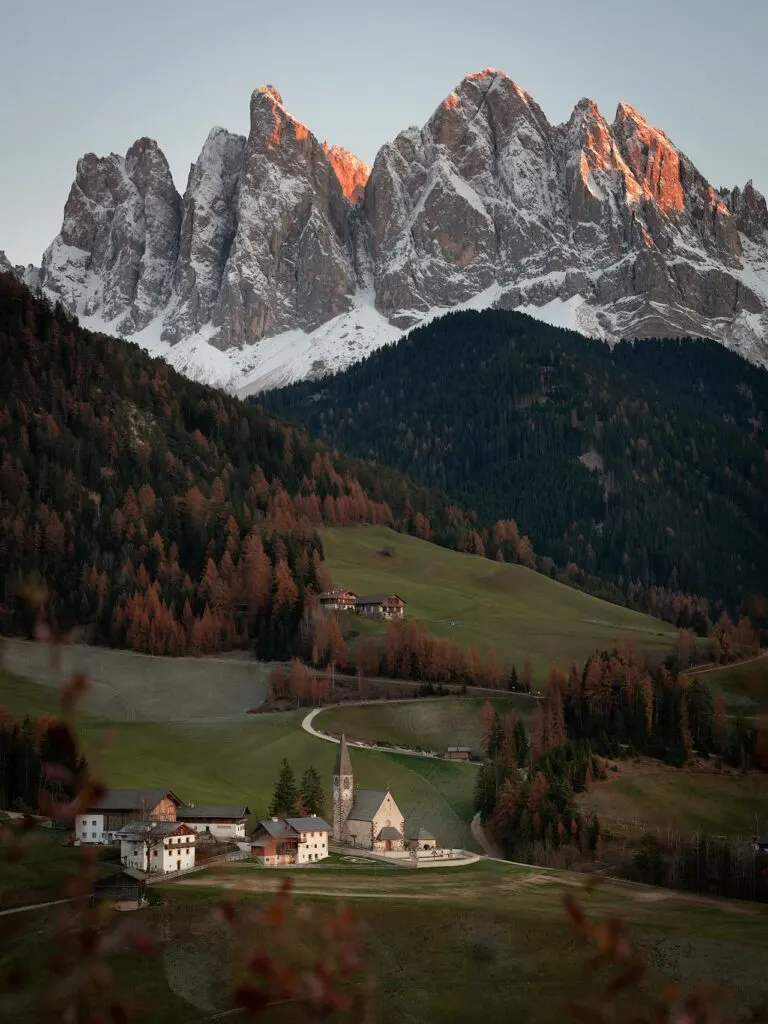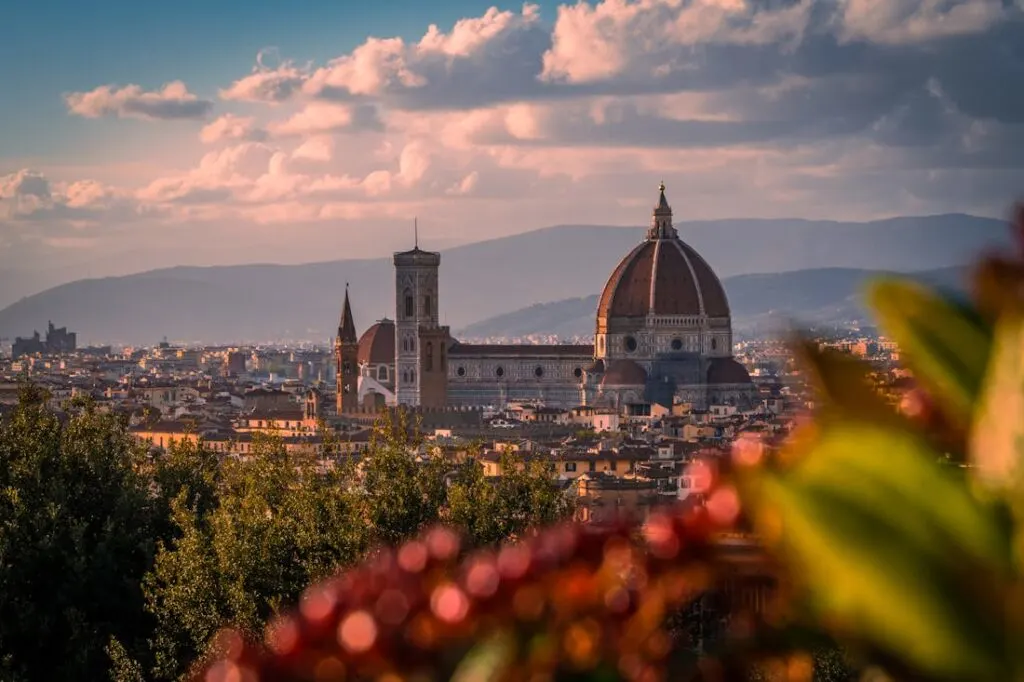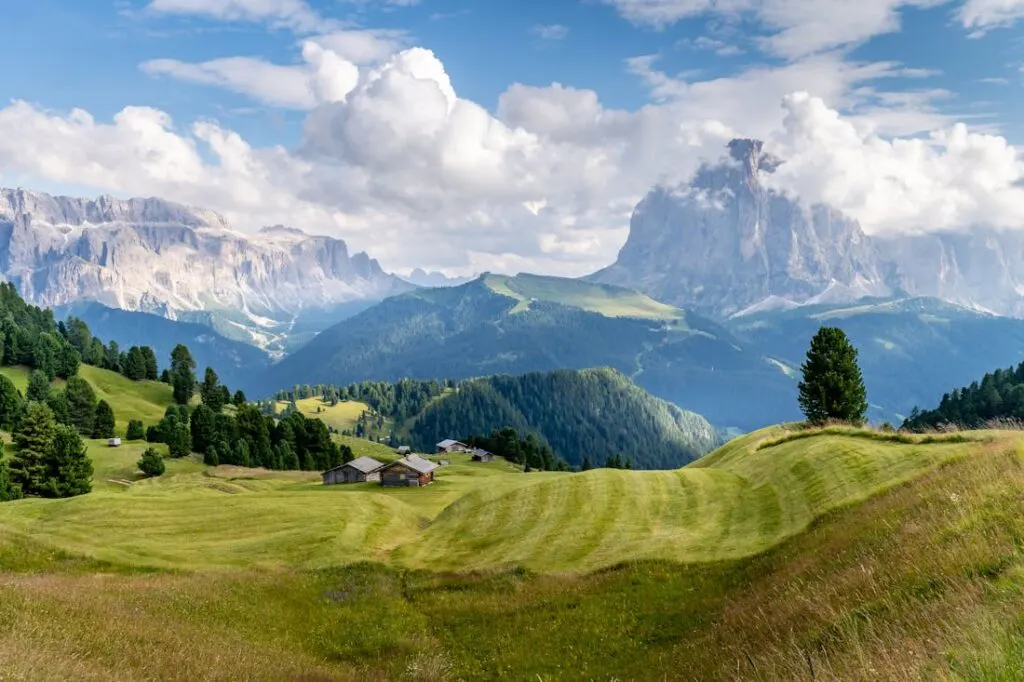Italy, a country synonymous with art, history, and natural beauty, is home to many UNESCO World Heritage Sites, making it a treasure trove for cultural and natural heritage enthusiasts. With 58 sites officially recognized by UNESCO, Italy boasts the highest number of World Heritage Sites in the world! Come with me on a journey from the sun-drenched landscapes of the South to the alpine vistas of the North, exploring Italy’s UNESCO sites that stitch together the fabric of this nation’s rich tapestry.

Italy’s Iconic Sites
Italy’s UNESCO Sites offer an incredible variety of landmarks and landscapes. From the ancient ruins that tell tales of ages past to vibrant cities where the past and present blend seamlessly, these sites offer a window into the human journey through time.
This journey also takes us through breathtaking natural wonders, from the dramatic coastlines of the Amalfi Coast to the pristine beauty of the Dolomites, celebrating Italy’s diverse and spectacular natural heritage and discovering what makes Italy so unique.
As we travel from the crystalline waters of Sicily’s Aeolian Islands to the grandeur of the Venetian lagoon, our journey through Italy’s UNESCO sites is an exploration of humanity’s enduring legacy and the timeless beauty of nature. Once you arrive in central Italy, traveling with Italo’s high-speed train from Florence to Milan allows you to visit enchanting places, admiring stunning landscapes and cities of great artistic value.
Join me as we uncover the stories behind these iconic sites, offering insights into the art, history, and natural wonders that make Italy a cornerstone of world heritage.

Southern Italy’s UNESCO Heritage: Ancient Ruins, Artistic Legacy, and Coastal Wonders
In sun-drenched Southern Italy, the past whispers through ancient ruins and vibrant landscapes, where UNESCO has recognized sites that tell a tale as old as civilization itself. These UNESCO World Heritage Sites echo the grandeur of bygone eras.
From the haunting ruins of Pompeii and Herculaneum, frozen in time by the eruption of Mount Vesuvius, to the Trulli of Alberobello, with their unique conical roofs that dot the Apulian countryside, the art, and architecture here tell tales of Greek and Roman influences, Byzantine and Norman grandeur.
Along the crystalline waters of the Amalfi Coast, dramatic cliffs loom above picturesque towns, exemplifying the harmony between the natural and human-made. Further west, the ancient city of Agrigento in Sicily, with its Valley of the Temples, stands as a monumental testament to Greek civilization and its enduring influence on the Western world.
These sites, set against the backdrop of the Mediterranean, not only showcase the artistic and architectural achievements of their eras but also reflect the dynamic history of the southern Italian regions, where nature and humanity have combined to create landscapes of unparalleled beauty. A visit to these heritage sites could be an unforgettable highlight of any tour of Europe.

Central Italy: The Cradle of the Renaissance and Medieval Marvels
Venturing into the heart of Italy, the central regions are painted with rich hues of history, art, and architecture. This is where the Renaissance began, casting a light that would illuminate the world, and where medieval towns perch atop hills, their walls and towers narrating stories of a time when city-states flourished.
Central Italy is home to an impressive array of UNESCO World Heritage Sites that capture the essence of its past glory and artistic achievements. The historic center of Florence, known as the cradle of the Renaissance, is a testament to the era’s artistic and intellectual revolution.
Here, masterpieces by Michelangelo, Leonardo da Vinci, and Botticelli adorn the city, from the corridors of the Uffizi Gallery to the dome of the Cathedral of Santa Maria del Fiore, highlighting the unparalleled contributions of the region to art and culture.
Not far from Florence, the medieval city of Siena offers a glimpse into the past with its well-preserved historic center, famous for the Piazza del Campo and the biannual Palio horse race. From further away, the ancient streets of Rome, the Eternal City, encapsulate layers of history, from the Roman Forum to the Colosseum, echoing the power of the Roman Empire.
Beneath the city, the Vatican City stands as a sovereign entity, housing St. Peter’s Basilica and the Sistine Chapel, where Michelangelo’s frescoes offer a glimpse into the divine.
Central Italy, with its cities of unparalleled historical depth and archaeological sites, connects us to antiquity. and Renaissance artworks that continue to inspire, serve as a bridge between the past and present, inviting explorers to delve into the heart of Italian heritage.

Northern Italy: Renaissance Splendour and Alpine Majesty
As our journey through Italy’s UNESCO sites ascends into the northern regions, we encounter a landscape where the grandeur of Renaissance architecture blends seamlessly with the majestic beauty of the Alps and serene natural parks. UNESCO World Heritage Sites of diverse yet equally mesmerizing qualities mark Northern Italy, each reflecting the region’s multifaceted historical and natural heritage.
The cities of Venice and its lagoon present a dreamscape where art and water coalesce, a testament to human ingenuity in the face of the Adriatic’s ebb and flow. Here, the Gothic and Renaissance facades along the Grand Canal tell tales of Venice’s erstwhile maritime dominion.
In the heart of the Lombardy region, Milan stands as a beacon of Renaissance art, home to the Last Supper by Leonardo da Vinci, a masterpiece of human creativity that has captivated audiences for centuries. Not far from the urban centers, the natural beauty of the north unfolds in the Italian Lake District, including the pristine landscapes of Lake Como, where the reflective waters mirror the surrounding peaks and villas in a symphony of natural beauty.
Ascending further, the Dolomites, part of the Southern Limestone Alps, offer breathtaking vistas and a haven for adventurers and nature lovers alike. This mountain range, with its towering peaks, deep valleys, and crystal-clear lakes, exemplifies the awe-inspiring beauty of Italy’s alpine regions.
The Dolomites are not just a natural wonder but also a cultural landscape that reflects the harmonious relationship between humans and nature, where centuries-old traditions continue amidst the peaks.
Northern Italy, with its rich tapestry of Renaissance cities, alpine landscapes, and serene lakes, highlights the diversity of the Italian UNESCO heritage. From the artistic achievements of the Renaissance to the natural splendor of the Alps and lakes, this region offers a journey through the heights of human creativity and the amazing beauty of the natural world.

Discovering Italy’s UNESCO Heritage: Florence to Milan with train
Italy’s UNESCO World Heritage Sites form a mosaic of human achievement and natural splendor that spans the country. Traveling from Florence to Milan by train is a unique, fascinating, and fun experience that will make your trip to Italy unforgettable.
From the sun-kissed shores of the South to the alpine heights of the North, Italy’s UNESCO Sites tell a story of cultural innovation, artistic expression, and natural beauty that has unfolded over millennia.
Exploring Italy’s UNESCO sites is not just tourism; it is an immersive journey into the heart of human history and the wonders of the natural world.
